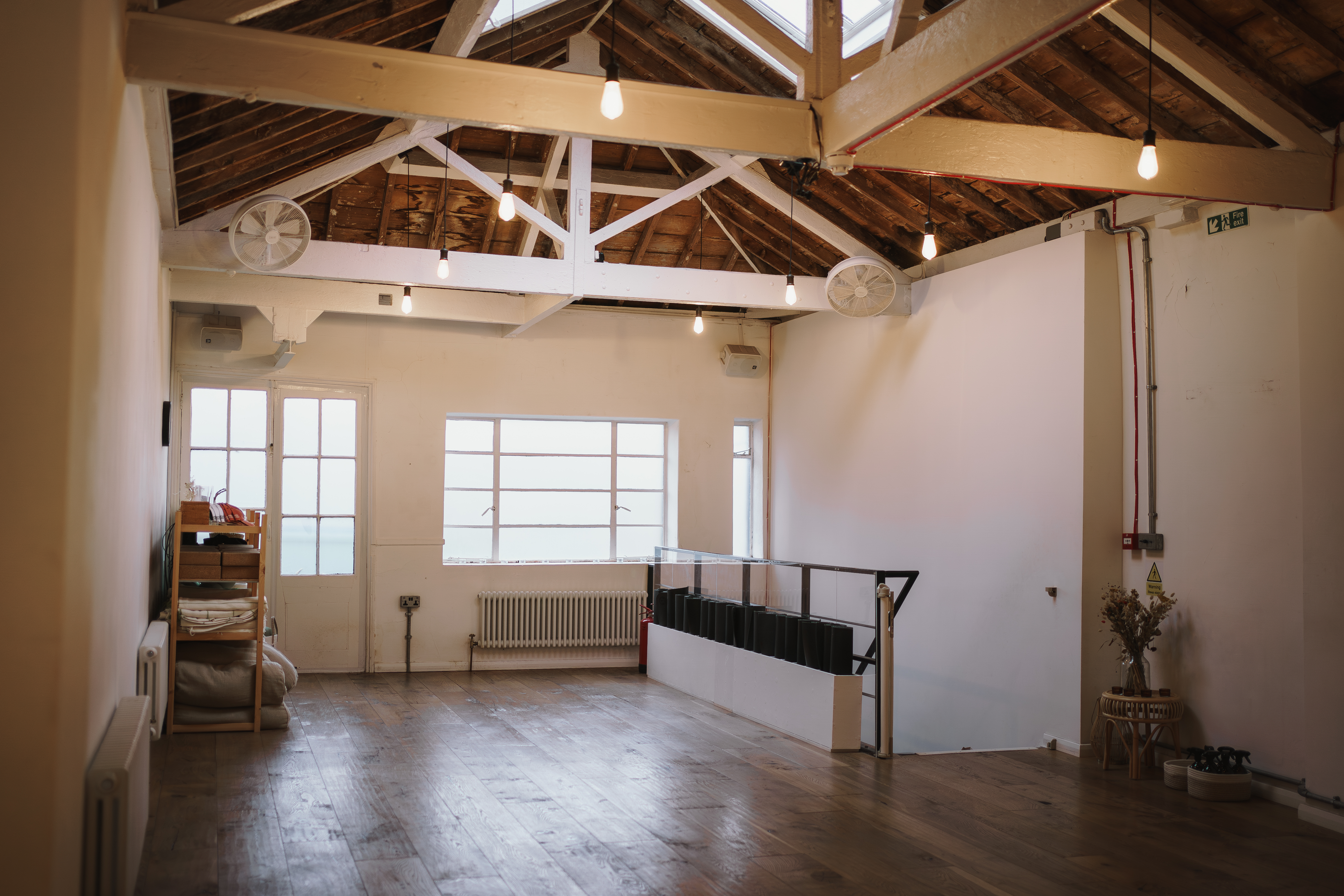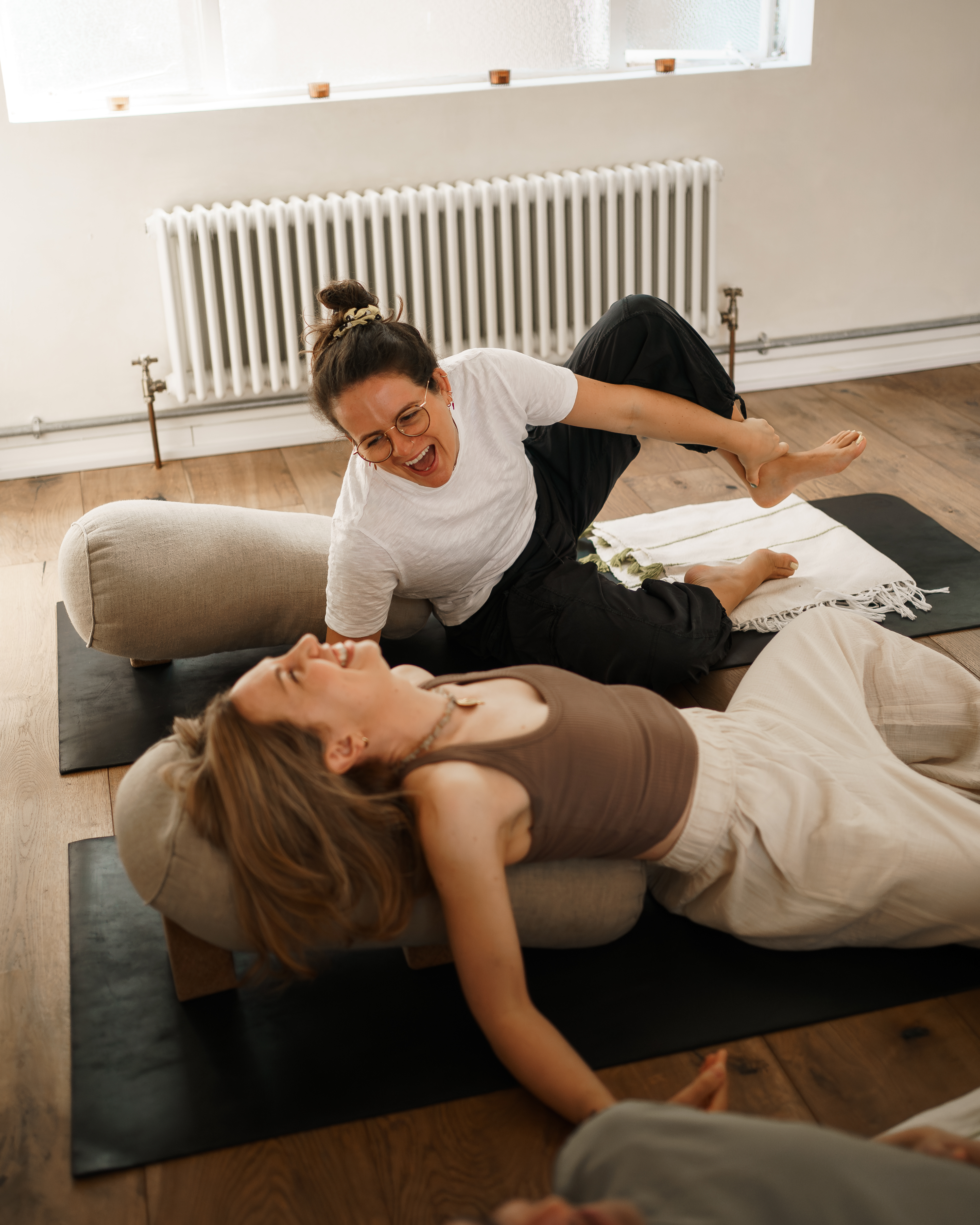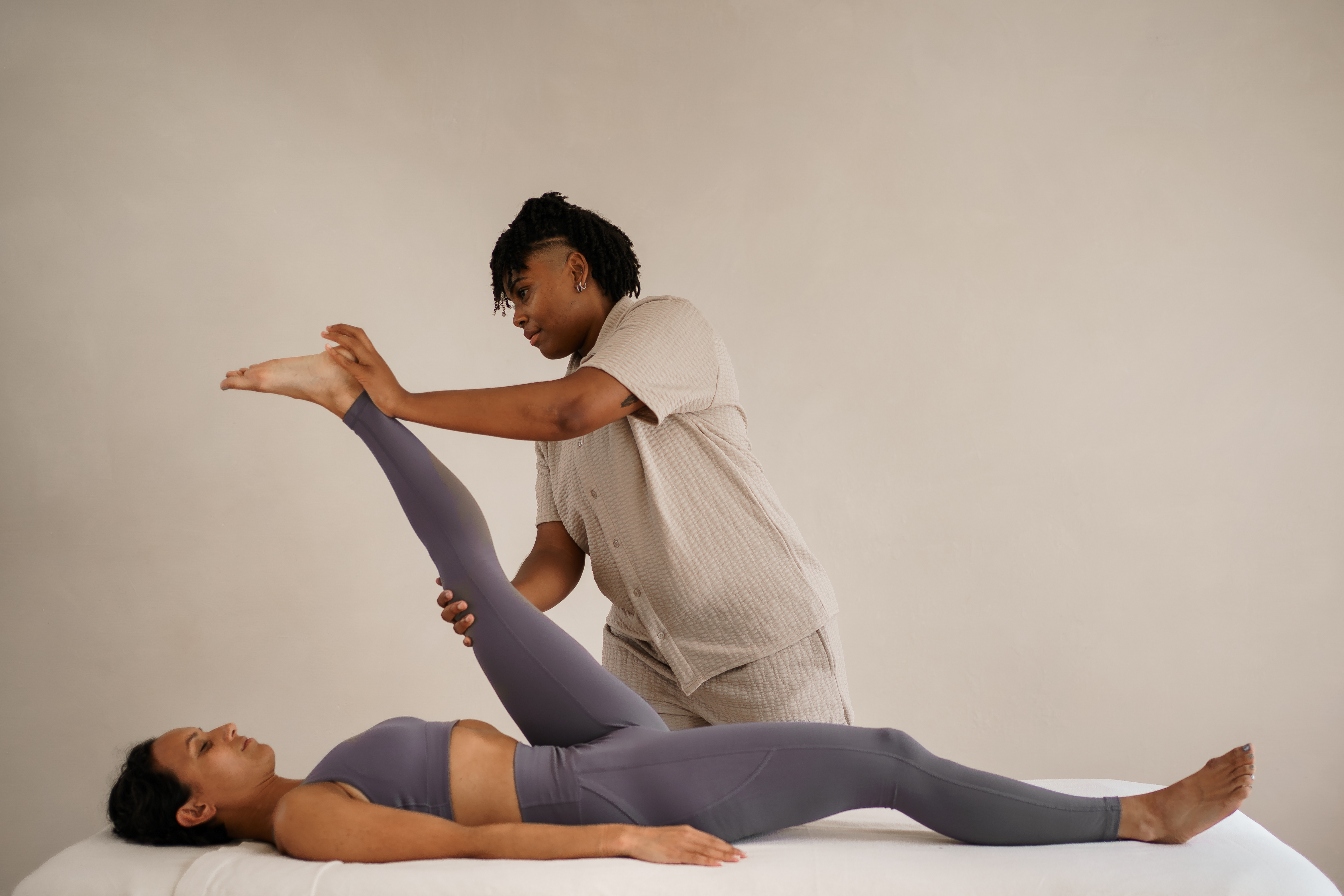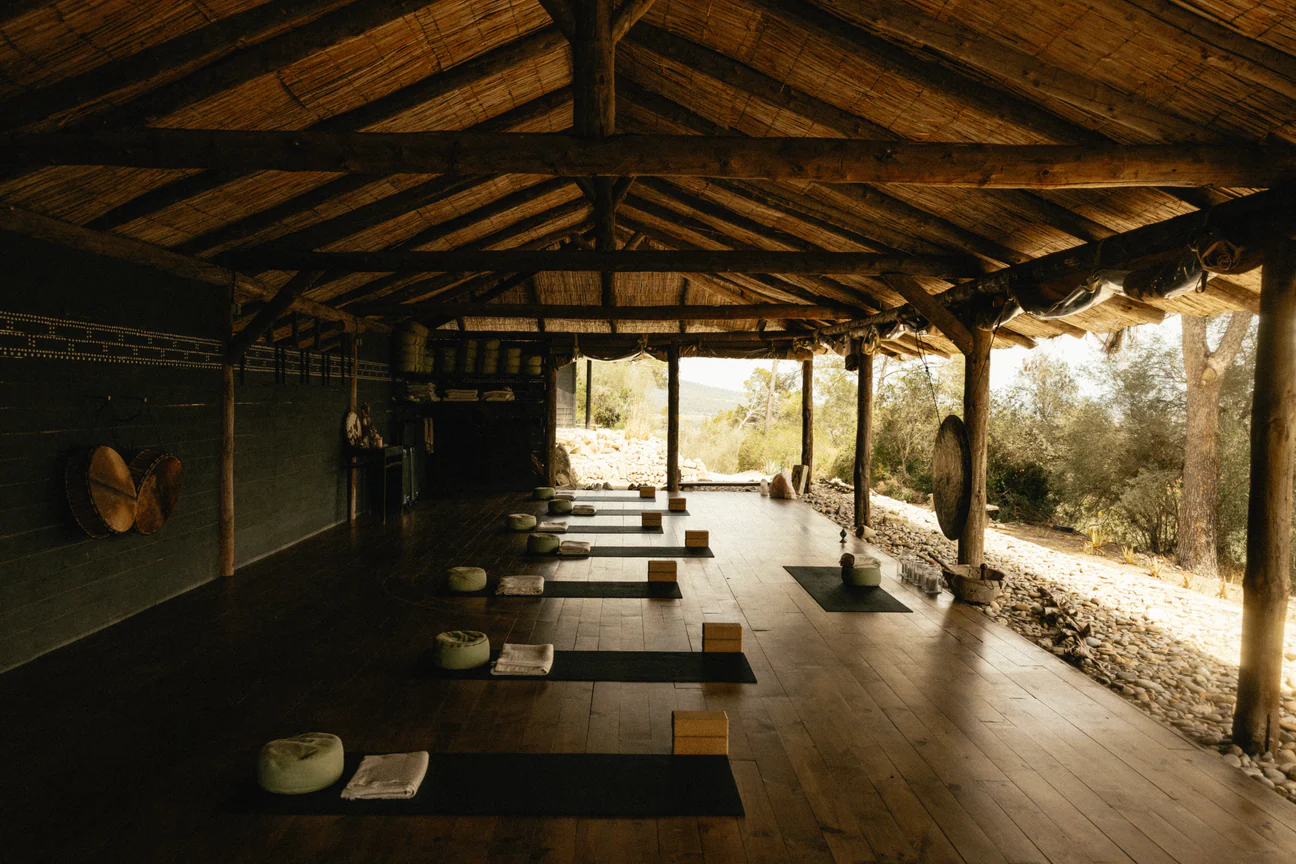If you’re new to yoga—or coming back after a long stretch away—you probably have simple questions: What actually happens? Will I be out of my depth? Will anyone help me if I’m lost? You don’t need jargon or mystique; you want to feel safe, seen, and supported. That’s the point of a beginner-friendly space.
You don't need to touch your toes to come to a yoga class. You don't need to be flexible, athletic, or fluent in pose names. Yoga is supposed to meet you where you are. The job of a good beginner-friendly class isn’t to force you into shapes or a fast-paced flow; it’s to help you find your footing, your breath, and a pace that makes sense for you today—with the body, mind, and nervous system you’ve got.
Consider this your primer on what to expect in a yoga class.
What actually happens in a beginner-friendly class
We keep the first few minutes simple: you’ll arrive, find a mat (we provide them), and have time to breathe and settle. Your teacher will outline the plan in plain language—no riddles, no pressure. We warm the joints and spine with familiar movements (think: gentle twists, cat–cow, shoulder rolls) before introducing a handful of foundational shapes like mountain, lunge, and child’s pose. You’ll get options from the start: bend the knees, widen the stance, use blocks or a chair. We’ll link breath with movement at a steady pace, then wind down and finish with proper rest. Hands-on support is always consent-based; if you prefer verbal guidance only, say the word.
You won’t be thrown into rapid sequences or expected to memorise anything. The point is not to perform; it’s to learn how to move and breathe in a way that supports your system. If something doesn’t work in your body today, we adapt. That’s not “cheating”—it’s the practice.
How you’ll feel (the bit that matters)
Our aim is that you feel safe, welcomed, and unhurried. Safe means you can choose your pace, rest at any time, and know that pain is not a requirement for progress. Welcomed means the culture of the room is kind and low-ego; you’re not expected to match anyone else’s range or rhythm. Unhurried means there’s time to understand what you’re doing and why, rather than rushing to “keep up”. By the end, we want you to feel more at home in your body than when you walked in—and to leave with one or two simple tools you can use the next time life gets loud.
Common worries, honest answers
“I’m really stiff.” Great—yoga helps with that. We’ll start where you are, use props, and prioritise positions that create space rather than strain.
“I’ve not moved much lately / I’m nervous.” Totally normal. Your breath is the dial we use to keep things manageable; if it gets tight, we scale back.
“What about my old injury?” Tell the teacher before class. We’ll offer workable options. If you’re under medical care, check in with your clinician too.
“I can’t sit cross-legged.” You don’t have to. Chairs, bolsters, and blocks exist for a reason.
“Will I be the only beginner?” Unlikely. And even if you were, it’s our job to make sure you feel included and supported.
What to wear and bring
Wear anything you can move in. Layers help—warm at the start, cosy at the end. Barefoot is standard; grip socks are fine. Bring water if you like. We provide mats and props, so there’s nothing to buy before you begin. Arrive five to ten minutes early if you can; it’s nicer not to rush.
How beginners build confidence (without burning out)
Confidence comes from three things: a breath you can trust, a couple of shapes you recognise, and a consistent date with your mat. Keep the breath easy and steady; if it gets jumpy, you’ve gone too far for today. Learn two or three fundamentals well and repeat them—familiarity beats novelty at the start. And aim for once a week. Consistency beats heroic bursts, and your body prefers a steady rhythm.
What progress really looks like
Let’s set expectations well. Yes, your mobility will likely improve—but the changes you’ll notice first are quieter and more useful in daily life. You’ll catch yourself softening your jaw when you’re stressed. Your shoulders won’t live quite so close to your ears. You’ll remember you have an exhale when the inbox climbs. Sleep might come easier. These are not side effects; they’re the point.
Quick etiquette so nothing feels awkward
Tell us if something doesn’t work for you—before class or quietly during. If you’d rather not receive hands-on assists, that’s absolutely fine; we’ll keep guidance verbal. Need a break mid-class? Take it. You don’t have to ask permission to look after yourself.
A word for the returners
If you’re coming back after months or years away, you’re not starting from scratch—you’re starting from experience. Your body remembers more than you think, and your nervous system will thank you for not trying to “make up for lost time” in one session. Approach the first few classes like a re-introduction: check in with breath, range, and energy levels; choose the simpler option and build from there. Give yourself three to four weeks before you judge how it’s going. That patience pays off.
Ready to start—with support?
You can absolutely begin on your own with this guide.
Come along to try our beginner-friendly classes which prioritise understanding your body and building confidence at your own pace.
SLOW FLOW: our signature Slow Flow class gives you time to intentionally explore mobility and movement. Moving at a slower tempo than traditional vinyasa, you'll build understanding of poses while discovering your body's range of movement. Expect gentle strengthening elements alongside juicy stretches that leave you feeling both energised and grounded.
YIN: a quiet, supported practice where you'll hold poses for several minutes with the use of props. Working with deep layers of the body, fascia and connective tissue, this practice allows a gentle opening while your mind naturally settles. Perfect for learning to be still and listening to your body.
QIGONG FLOW: blending ancient Chinese wellness with yoga, this practice uses slow, flowing movements paired with intention and breath to shift energy. Gentle yet energising, you'll cultivate deep body connection while nurturing strength, flexibility and presence.
Mats and props are provided; you just bring yourself.
Explore classes and book here.
And whether you join us or not, remember: starting small counts. Turning up counts. Rest counts. You don’t have to earn your place in the room—you already have it.





